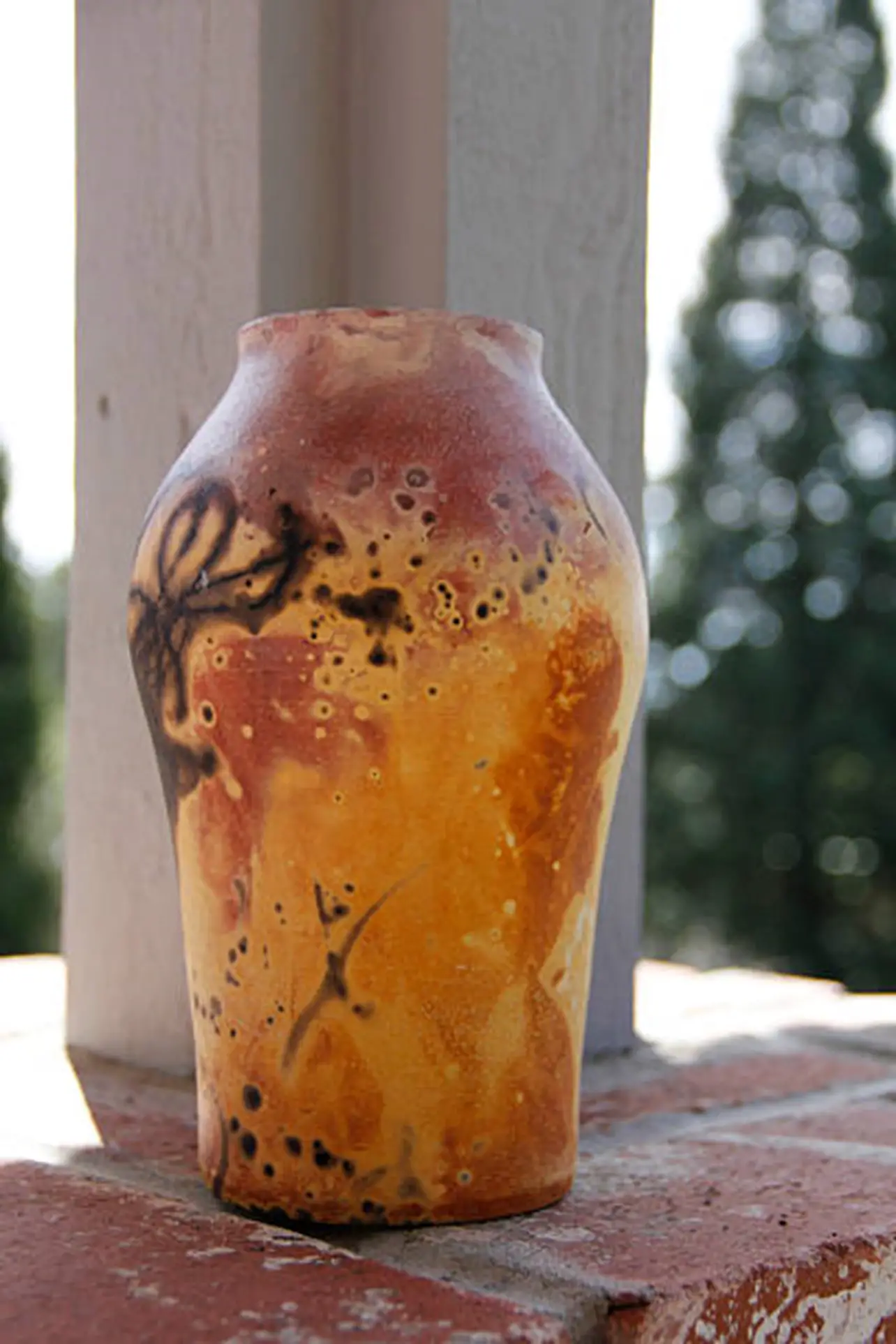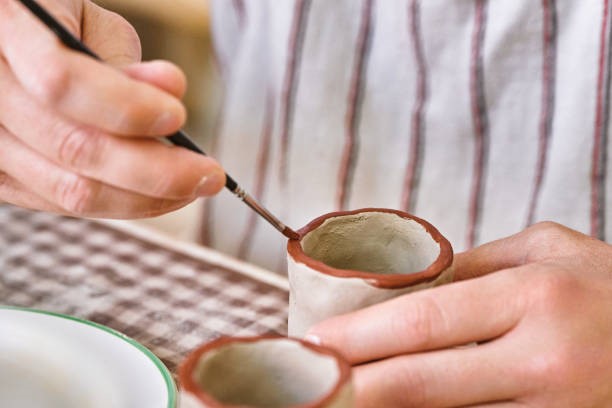The beautiful realm of pottery reveals a range of opportunities for the creator. Even the toiling method through which all pieces of pottery go through is being consistently reinvented and innovated through the years. In the broad spectrum of firing techniques, a method has become sustainable and a harbinger of aesthetically appealing designs. Foil sagger kilns involve enveloping pottery pieces in a cloak of tin foil before subjecting them to high temperatures and then cooling them. This article will explore the workings of a foil sagger kiln, how to operate one, and its potential to create newer and better pottery designs.
Understanding the Working of a Foil Sagger Kiln in Creating Aesthetic Pottery
At its core, foil sagger firing combines art and chemistry to reveal great results. The delicate working of raw materials, heat, and the overall artistic vision can do wonders for the entire process. What unfolds in this type of heating can only be described as an alchemical wonder. The pottery that rests within the confines of tin foil is subjected to high, intense heat and temperatures, which creates complex chemical reactions. A mix of organic and inorganic materials reveals a wide assortment of colors, textures, and patterns like never before. These are different from any other type of firing process, and the results are magnificent.
As the kiln brings the pottery toward its zenith, the materials involved enter a combustion and reaction process. Thus, myriad visual delights are revealed, which are unique outcomes. Sometimes, it is the bold imprint of leaves or an ethereal color you did not expect; foil sagger kilns are truly the best of human creativity combined.
A Guide to Using Foil Sagger Kilns for Beautiful Pottery Designs
Now that you understand the workings of a foil sagger kiln, you are more than ready to try this process of achieving a rich tapestry of designs on your pottery. Here is how the magic unfolds.
The Array of Materials
A good amount of materials need to be put together for you to experiment with the various designs created through foil sagger kilns. Start with understanding how each material impacts the making of the pottery and the designs revealed on it. You must be ready to experiment with various materials, like sawdust, copper wires, leaves, flowers, and much more, to achieve uniquely sophisticated designs.
The Affair of Temperature and Timing
When you have grown accustomed to the role of materials in this process and have decided which ones to use for your work, learn to control the kiln’s temperature. If you have experience, you can better handle heating a tin foil-wrapped pottery piece. But if you are a first-timer, research how much time will prove enough for your piece to come out enhanced with its designs. Be attentive towards time and temperature at all times of the heating.
The Artistry of Unknown
One thing about foil sagger kilns – you never know what may be the outcome. The unpredictability that often surrounds this process is an artistic process in itself. Even when thoroughly planning an outcome, you may get something entirely different. You’ll never get a design you will not like, for the intense heating brings forward only refined appearances.
The Incorporation of Traditional or Modern Firing Techniques
While familiarizing yourself with various materials, learning about the multiple techniques also helps you achieve more accurate and pretty results. Carving intricate designs, manually setting materials onto the clay, and more lets you play with various traditional and modern techniques to embellish pottery. However, use good-quality pottery tools like the Nozomy Pottery Clay Sculpting Tools to sculpt, carve, and shape your pottery into beautiful designs. The set comes in 12 pieces with diverse applications to simplify your projects.
Now that you have the right tools, here are some design techniques you can implement to create beautiful firing effects using foil sagger kilns.
| Design Technique | How to Employ It? |
| Raku-inspired pottery | Achieve vibrant colors and metallic finishes in your pottery by merging combustible materials and glazes inside the sagger. |
| Smoke-fired vessels | They help create smoky and marbled patterns using organic materials like sawdust, leaves, straw, and more. |
| Natural textures | Put together leaves, flowers, tendrils, and other materials and press them to the surface of the pottery. It leaves beautiful imprints on them. |
| Crackle effects | Put crackle glazes on the pottery before sagger firing it. The controlled temperatures will leave deeper crackled imprints on it. |
| Metallic finishes | To enhance the luster, get a refined metallic finish by putting metallic powders and glazes on the pottery before sagger firing. |
| Masking techniques | Introduce small wax patches at some sections of the pottery and leave the other exposed to reveal a contrasted sagger-fired design. |
| Layered effects | Layer different glazes and materials on the pottery to achieve a sophisticatedly combined look. |
| Obvara firing technique | Dip the pottery into a fermented brew before sagger firing to reveal a refined and contrasted appearance. |
| Sgraffito and carving | Add slips and glazes to carve designs on the surface of the pottery. It reveals intricately enhanced designs. |
| Experimentation | Experiment with unconventional materials like coffee powder, salt, sugar, rice, and more to achieve even more designs. |
Safety Precautions to Undertake While Using a Foil Sagger Kiln
Since heating in tin foil is exciting, it also holds safety risks. The high temperatures can take the best of you if you are not cognizant. Here are some tips to ensure your experience is better.
1. Proper Ventilation
Always keep your pottery studio well-ventilated, whether for foil sagger kilns or any other type. It allows the airflow to remain consistent. Heat trapped in a room can cause health hazards for you and fire hazards for your property.
2. Protective Gear
While you work on your pottery and experiment with materials to put on it for designs, wear gloves, goggles, and masks. Copper wires, sawdust, and other elements can hurt your senses when mishandled, so keep heat-resistant and protective gear on at all times.
3. The Rituals of Fire Safety
Equip your studio with fire extinguishers to quell any fire-related hazards. Again, wear insulated gear to protect yourself from the flames as well.
4. Mentorship
A little help here and there will be good if you are not a seasoned potter. Seek assistance and mentorship from someone who knows pottery more than you and understands the workings of a foil sagger kiln better to guide you toward a successful venture.
Conclusion
Foil sagger kilns are the epitome of creativity in the realm of pottery. The number of designs you can combine and form is endless, and so are the outcomes of what you can get. Trying this can be an enriching experience that you must try. But of course, wear your protective gear and keep the studio airy before doing anything!








